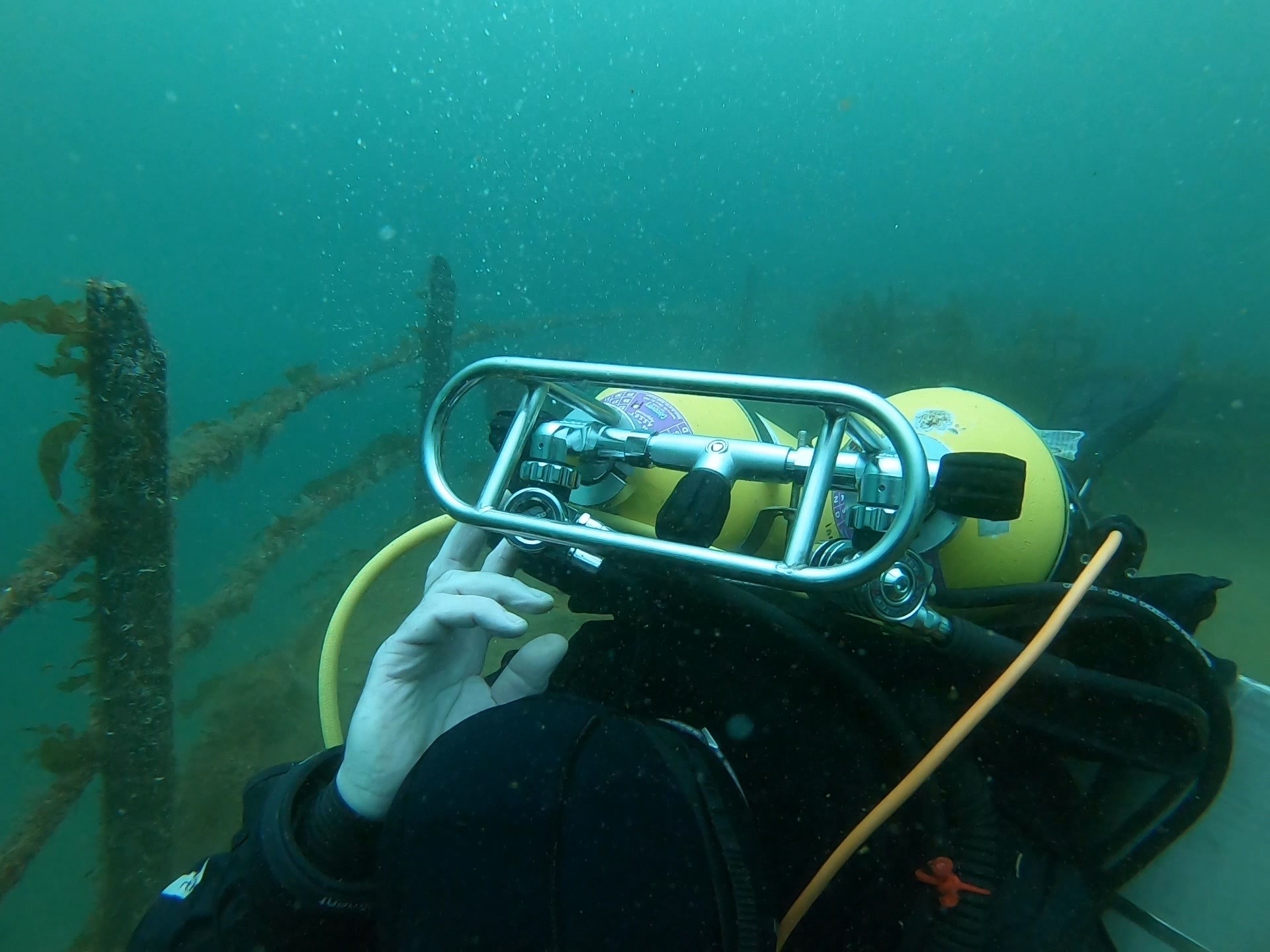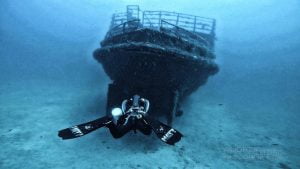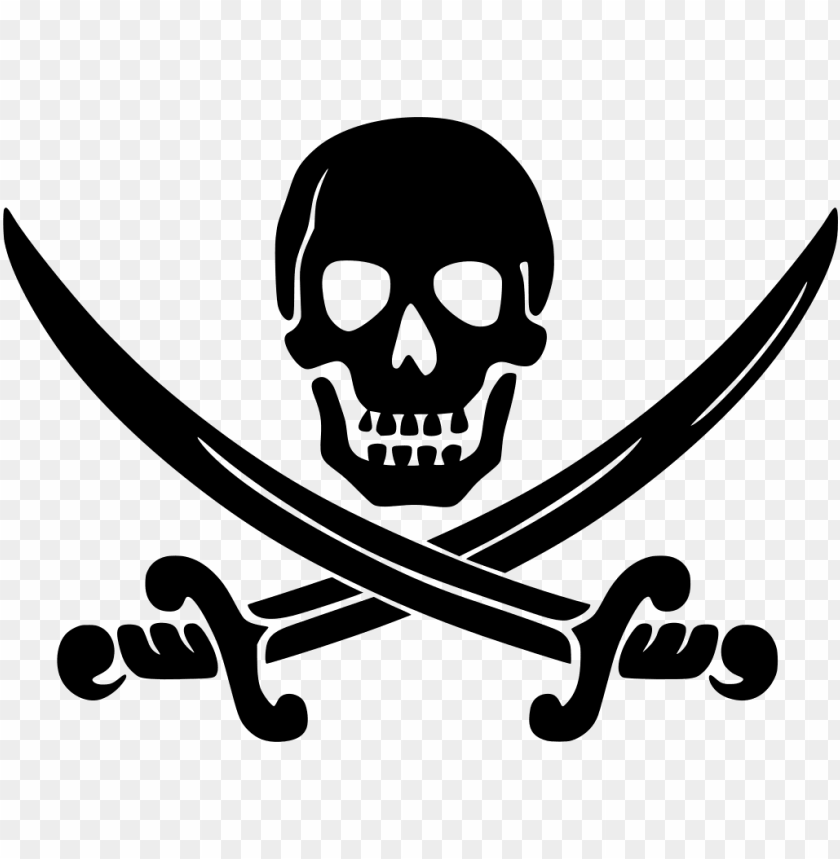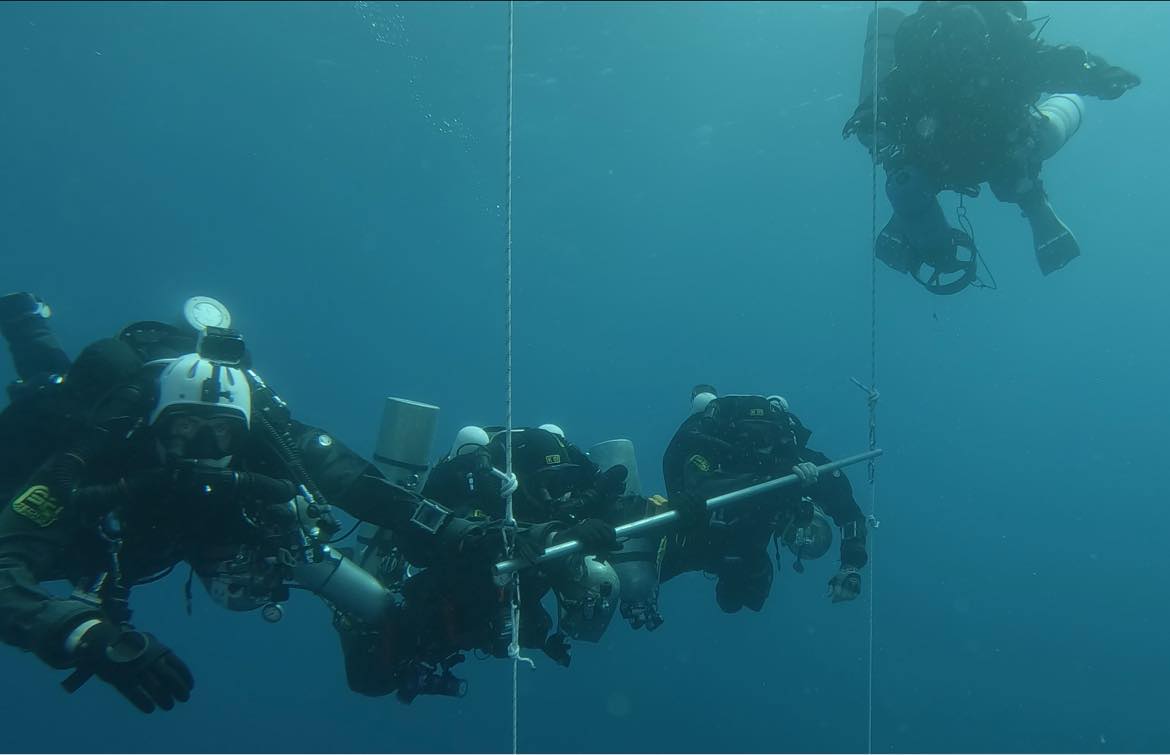Technical Rescue & Safety Diver
[/box] Course OverviewThe technical rescue diver is trained to operate in a highly stressed rescue environment. Their water skills are honed to perfection. They have the knowledge and skill to extinguish sparks that set off error chains. In addition they can conduct effective risk assessments, prepare emergency plans and have the skills and knowledge to be an effective safety diver.
What’s Involved
This course has three components: Knowledge development, practical application and open water dives, 2 skills dives and 3 rescue scenario dives. These will be scheduled to suit divers enrolled in each course.
Course Skills
Anticipating and avoiding error chains, identifying and managing stress, in water rescue skills for technical divers, O2 tox management. DCS management, role of safety diver, responding to technical diving emergencies, emerency planning
Why Do the Course?
Technical diving is becoming a more popular pastime now amongst all divers. Dives are becomng longer and deeper and using mixed gases and higher PO2’s leading to increased risks of toxicity, thermal and physical stress. A recreational rescue course is no longer sufficient to adequately manage a technical diving incident. In addition many technical dives are conducted further afield and further from help. Learn how to help yourself and others in the high stress situations faced in the technical field.
What’s Included
The course fee covers instructional time, manual, use of facilities including pool. Students are expected to pay any boat costs and accomodation costs required to complete the course but we do have packages available. Only after the successful completion of the course do you pay your certification fee – “you pay for training – you earn the certification”
What You Need
Standard technical diving scuba equipment. Backmount, CCR or sidemount sytems are acceptable.
[button link=”https://swt.ie/padi-tec-rec-courses/” type=”small”] Back to Main Menue[/button]
[/et_pb_text][et_pb_cta admin_label=”Call To Action” title=”I WANT TO DO THIS” button_url=”https://swt.ie/book-now/” url_new_window=”on” button_text=”BOOK NOW” use_background_color=”on” background_color=”#1e73be” background_layout=”dark” text_orientation=”center” header_font_size=”26″ body_font_size=”14″ use_border_color=”off” border_color=”#ffffff” border_style=”solid” custom_button=”off” button_text_size=”20″ button_border_width=”2″ button_border_radius=”3″ button_letter_spacing=”0″ button_use_icon=”default” button_icon_placement=”right” button_on_hover=”on” button_border_radius_hover=”3″ button_letter_spacing_hover=”0″]
[/et_pb_cta][/et_pb_column][et_pb_column type=”1_3″][et_pb_image admin_label=”Image” src=”https://swt.ie/wp-content/uploads/2015/12/logo_home.png” show_in_lightbox=”off” url_new_window=”off” animation=”left” sticky=”off” align=”left” force_fullwidth=”off” always_center_on_mobile=”on” use_border_color=”off” border_color=”#ffffff” border_style=”solid”]
[/et_pb_image][et_pb_text admin_label=”Text” background_layout=”light” text_orientation=”left” text_font_size=”14″ use_border_color=”off” border_color=”#ffffff” border_style=”solid”]
Prerequisites
PADI tec 45 or equivalent, 18 years old, minimum of 100 dives, certified oxygen provider
Student to Instructor Ratio
4:1 (maximum)
No. Sessions
Practical application and theory sessions plus 2 skills dives and 3 x open water rescue scenario dives. Minimum 3 days
Equipment
On joining we will send you a kit list, full kit can be rented for the course
Related Courses
Wreck & Advanced Wreck
Cavern, Cave
TEC 40, 45 & TEC 50
Foundations of Safer Diving
[/et_pb_text][et_pb_testimonial admin_label=”Testimonial” author=”Kirk K, Kerry” job_title=”Rec Diver” url_new_window=”off” quote_icon=”on” use_background_color=”on” background_color=”#f5f5f5″ background_layout=”light” text_orientation=”left” portrait_border_radius=”90″ portrait_width=”90″ portrait_height=”90″ body_font_size=”14″ use_border_color=”off” border_color=”#ffffff” border_style=”solid”]
I’ve been diving for over 20 years, including instructing and Matt was able to bring my diving skills and knowledge to a completely new level
[/et_pb_testimonial][et_pb_social_media_follow admin_label=”Social Media Follow” link_shape=”rounded_rectangle” background_layout=”light” url_new_window=”on” follow_button=”on”] [et_pb_social_media_follow_network social_network=”facebook” url=”https://www.facebook.com/Southwestech/” skype_action=”call” bg_color=”#3b5998″] facebook [/et_pb_social_media_follow_network] [/et_pb_social_media_follow][et_pb_image admin_label=”Image” src=”http://swt.ie/wp-content/uploads/2016/01/tecrec2.jpg” show_in_lightbox=”off” url=”https://www.padi.com/scuba-diving/padi-courses/course-catalog/technical-diving-courses/” url_new_window=”off” animation=”left” sticky=”off” align=”left” force_fullwidth=”off” always_center_on_mobile=”on” use_border_color=”off” border_color=”#ffffff” border_style=”solid”] [/et_pb_image][/et_pb_column][/et_pb_row][/et_pb_section]









